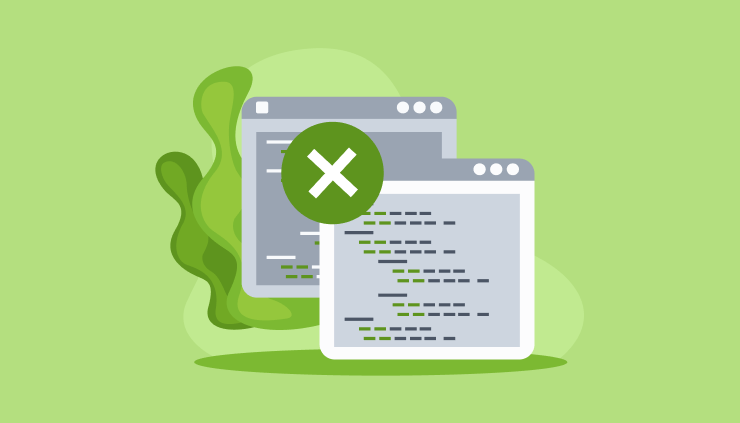Security Basics for Financial Applications
Security is a critical concern for financial applications due to the sensitive nature of the data they handle. Ensuring the integrity, confidentiality, and availability of financial information is paramount.
According to Plaid statistics, there are about 169.3 million mobile banking users in the United States. At the same time, more than 80%, according to the statements of the respondents themselves, consider mobile banking to be the key and preferred tool for accessing accounts. This speaks to the urgency of creating an effective, and most importantly, secure financial app. How to achieve this task, read below.
State of the Financial Application Market
The financial application market has witnessed exponential growth in recent years, driven by the rise of fintech and the increasing adoption of digital financial services. As financial applications become more sophisticated and interconnected, ensuring the security of these platforms becomes paramount. The digital transformation of the financial industry has brought about numerous benefits, but it also poses significant challenges in terms of cybersecurity. Financial institutions and fintech companies must stay vigilant to protect sensitive financial data and maintain the trust of their users.
Biggest Financial Applications Vulnerabilities
One of the most significant threats to financial applications is the potential for data breaches. Unauthorized access to sensitive financial information can have severe consequences, leading to financial losses and reputational damage.
Weak authentication mechanisms can expose financial applications to unauthorized access. Multi-factor authentication is crucial to add an extra layer of security and ensure that only authorized individuals can access the application.
Lack of proper data encryption can expose financial data during transmission or storage. Implementing robust encryption protocols is essential to safeguard sensitive information from malicious actors.
Financial applications often rely on third-party services and APIs. However, integrating these services without proper vetting can introduce vulnerabilities. Regular security assessments of third-party components are necessary to identify and address potential risks.
Using outdated software and operating systems can create security vulnerabilities. Regular updates and patch management are critical to address known vulnerabilities and enhance the overall security posture.
Security Requirements for Financial Apps
To ensure the security of financial applications, several key requirements must be met:
- Data encryption: Implement end-to-end encryption to protect sensitive financial data both in transit and at rest. This ensures that even if unauthorized access occurs, the intercepted data remains unreadable and unusable.
- Multi-eactor authentication (MFA): Enforce MFA to add an extra layer of identity verification. This significantly reduces the risk of unauthorized access, as attackers would need more than just a password to gain entry.
- Regular security audits: Conduct regular security audits and assessments to identify and address vulnerabilities. This proactive approach helps in staying ahead of potential threats and fortifying the application against evolving security risks.
- Secure API integration: When incorporating third-party services or APIs, ensure secure integration by thoroughly vetting the security practices of these external components. Regularly monitor and update integrations to address emerging security concerns.
Read also: Two-Factor Authentication for Software Products
Security Best Practices When Building Financial Applications
- Adopt a Secure Development Lifecycle (SDLC): Integrate security measures throughout the development lifecycle. This includes secure coding practices, regular security testing, and continuous monitoring to identify and address security issues early in the development process.
- Employee Training: Human error is a common cause of security breaches. Provide comprehensive security training for all employees involved in the development, deployment, and maintenance of financial applications to create a security-aware culture.
- Incident Response Plan: Develop and regularly update an incident response plan to effectively address security incidents. This plan should include clear steps to contain, mitigate, and recover from security breaches, minimizing the impact on users and the organization.
- User Education and Awareness: Educate users about best security practices, such as creating strong passwords, recognizing phishing attempts, and using secure networks. Informed users are less likely to fall victim to common security threats.
- Regular Security Updates: Stay vigilant for security updates and patches for both the application and its underlying infrastructure. Timely implementation of updates helps protect against known vulnerabilities and emerging threats.
Read also: Enterprise Cyber Security: Best Practices
Start Building Your Financial Application
As you embark on building a financial application, prioritizing security from the outset is crucial. Consider the following steps:
- Integrate security into the architectural design of your financial application. Identify potential security risks and implement countermeasures at every stage of development.
- Familiarize yourself with and adhere to industry-specific regulations and compliance standards, such as PCI DSS for payment applications. Compliance ensures that your application meets established security benchmarks.
- Engage with cybersecurity experts and conduct thorough security assessments throughout the development process. Their insights can help identify vulnerabilities and provide recommendations for strengthening your application's security posture.
- Implement continuous monitoring tools to detect and respond to security incidents in real-time. Proactive monitoring allows for early detection of potential threats, minimizing the impact on users and the overall security of the application.
In conclusion, the security of financial applications is non-negotiable in today's digital environment. By understanding vulnerabilities, complying with security requirements, and implementing best practices, companies can create reliable and secure financial applications that instill trust and confidence in users. As the financial industry continues to evolve, a proactive approach to security will play an important role in protecting sensitive financial information and maintaining the integrity of financial applications. Software Development Hub company provides assistance in creating a safe and effective financial application. Having extensive experience in developing software products, SDH offers the best option allowing you to complete tasks and scale your business.
Categories
Share
Need a project estimate?
Drop us a line, and we provide you with a qualified consultation.









